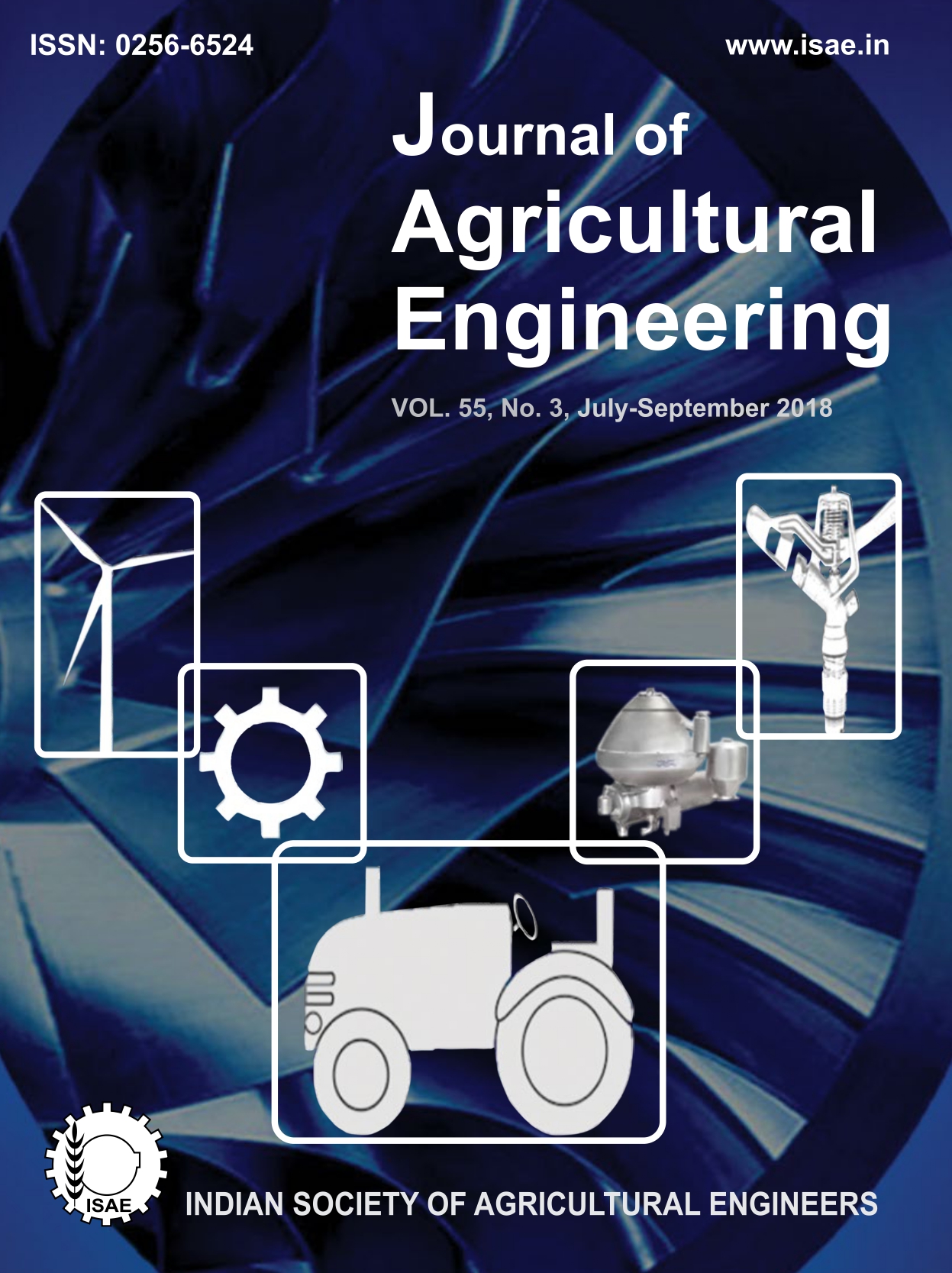Application of Linear Programming to Maximize Net Return by Allocating Land under Different Crops in Bhagwanpur Distributary
DOI:
https://doi.org/10.52151/jae2018553.1660Keywords:
Linear programming optimization, land productivity, water productivity, net return, Bhagwanpur distributary commandAbstract
Agriculture in India is gradually tending to be less interesting and lucrative profession due to high risks and less reliability. In order to increase net return from agriculture, proper planning and consideration of prevailing constraints is essential. Bhagwanpur distributary command area-based problem, consisting of maximization of net return with available land, water, labour, energy and other affinity constraints was formulated and solved employing modified Simplex method of linear programming. The area allocated under different crops, land productivity and water productivity for various combinations of canal water and ground water use were computed. When more area was allocated under remunerative crops like maize and potato with 100 % tube well water and canal water use by the crops, maximum net return of `2.31× 108 could be obtained. Maximum land productivity for the command area, was 63826 `.ha-1 when 85 % canal water and 100 % ground water were used by the crops in total area of 3426.9 ha; while maximum water productivity of 25.66 `.m-3 was obtained when 100 % canal water and ground water were used. The results may be useful in suggesting farmers on allocation of their agricultural land under profitable interventions to maximize net return, water productivity and land productivity.
References
Chavez-Morales J; Marino M A; Holzapfel E A. 1987. Planning model of irrigation district. J. Irrig. Drain. Eng.,113 (4), 549–564.
GCADA. 2005. Table 2 - Labour Requirement. Detailed Project Report of Gandak Command Area Development Project, Gandak Area Development Agency, Muzaffarpur (Bihar), pp: 181.
Hall W A; Dracup J A. 1970. Water Resource System Engineering. Tata Mc-Graw Hill Publishing Company Ltd., New Delhi, pp:372.
Kaushal M P; Khepar S D; Panda S N. 1985. Saline groundwater management and optimal cropping pattern. Water Int., 10 (2), 86–91.
Loucks D P; Stedinger J R; Haith D A. 1981. Water Resources Systems Planning and Analysis. Prentice- Hall, pp: 559.
Maji C C; Heady E O. 1980. Optimal reservoir management and crop planning under deterministic and stochastic inflows. Water Resour. Bull.,16 (3), 438-443.
Panda S N; Kaushal M P; Khepar S D. 1983. Irrigation planning in a command area in a project: an application of deterministic linear programming. J. Agric. Eng., 10 (2), 47-60.
Panda S N; Khepar S D; Kaushal M P. 1996. Interseasonal irrigation system planning for waterlogged sodic soils. J. Irrig. Drain. Eng.,123 (3), 135–144.
Paudyal G N; Gupta A D. 1990. Irrigation planning by multilevel optimization. J. Irrig. Drain. Eng., 116 (2), 273–291.
Singh A. 2012. Optimal allocation of resources for the maximization of net agricultural return. J. Irrig. Drain. Eng., 138 (9), 830–836.
Singh A. 2014. Optimizing the use of land and water resources for maximizing farm income by mitigating the hydrological imbalances. J. Hydrol. Eng., 19, 1447-1451.
Singh D K; Jaiswal C S; Reddy K S; Singh R M; Bhandarkar D M. 2001. Optimal cropping pattern in a canal command area. Agric. Water Manage., 50, 1-8.
Tyagi N K. 1988. Managing salinity through conjunctive use of water resources. Ecol. Modell., 40, 11–24.
Tanko L; Onyenweaku C E; Nwosu A C. 2006. Optimum crop combinations under limited resource conditions. A micro level study in Yauri, Kebbi state, Nigeria. Niger. Agric. J., 37 (1), 1-10.
WRIS. 2017. Water Resource Information System of India. www.india-wris.nrsc.gov.in. Accessed in July, 2018.
Yaron D; Dinar A. 1982. Optimal allocation of farm irrigation water during peak seasons. Am. J. Agric. Econ., 64 (4), 681–689.














